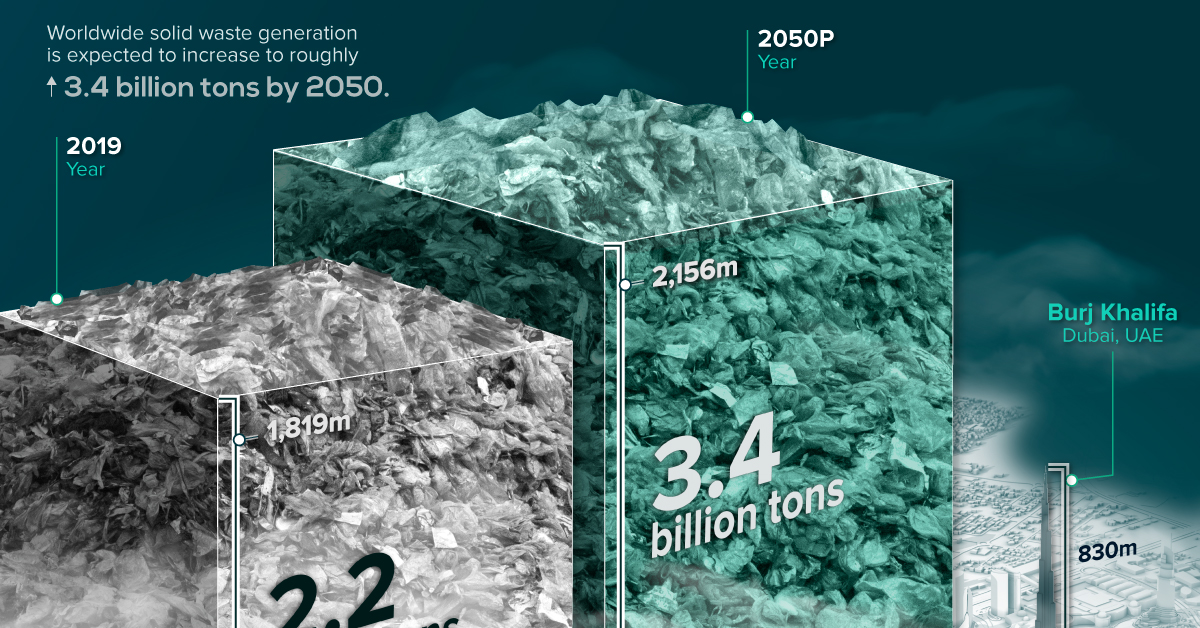One Year of Global Waste Visualized

One Year of Global Waste Visualized
Waste generation is expected to jump to 3.4 billion tonnes over the next 30 years, compared to 2.2 billion in 2019.
This is due to a number of factors, such as population growth, urbanization, and economic growth.
In this graphic by Northstar Clean Technologies, we show waste generation worldwide and discuss its impact and how it can be reduced.
The Growing Pile of Global Waste
The United States is the world’s most wasteful country, with each American producing a whopping 809 kg (1780 lbs) of waste every year.
Approximately half of the country’s yearly waste will meet its fate in one of the more than 2,000 active landfills across the nation. The country also has the largest landfill in the world, Apex, located in Clark County, Nevada.
The United States is followed by other industrialized countries like Denmark, New Zealand, Canada, and Switzerland based on average annual per capita municipal waste generation.
| Country | Average Annual per Capita Municipal Waste Generation (kg) |
|---|---|
| 🇺🇸 United States | 809 |
| 🇩🇰 Denmark | 781 |
| 🇳🇿 New Zealand | 727 |
| 🇨🇦 Canada | 706 |
| 🇨🇭 Switzerland | 706 |
| 🇮🇸 Iceland | 656 |
| 🇮🇱 Israel | 644 |
| 🇩🇪 Germany | 633 |
| 🇮🇪 Ireland | 616 |
| 🇱🇺 Luxembourg | 607 |
| 🇦🇹 Austria | 570 |
| 🇦🇺 Australia | 560 |
| 🇫🇷 France | 514 |
| 🇳🇱 Netherlands | 513 |
| 🇫🇮 Finland | 510 |
| 🇬🇷 Greece | 504 |
| 🇮🇹 Italy | 489 |
Compared to those in developed nations, residents in developing countries are more severely impacted by unsustainably managed waste. In low-income countries, over 90% of waste is often disposed of in unregulated dumps or openly burned, according to the World Bank.
In this scenario, the need for authorities to provide adequate waste treatment has become ever more important. However, less than 20% of waste is recycled each year, with huge quantities still sent to landfill sites.
Repurposing Waste
One of the major sources of waste is the construction industry. Every year, around 12 million tons of used asphalt shingles are dumped into landfills across North America.
Similar to roads, asphalt shingles have oil as the primary component, which is especially harmful to the environment.
However, using technology, the primary components in shingles can be repurposed into liquid asphalt, aggregates, and fiber for use in road construction, embankments, and new shingles.
Providing the construction industry with clean, sustainable processing solutions is also a big business opportunity. Canada alone is a $1.3 billion market for recovering and reprocessing shingles.
Even though 100% zero waste may sound difficult to achieve in the near future, a zero waste approach is essential to reduce our impact on the environment.
Northstar Clean Technologies’ mission is to be the leader in the recovery and reprocessing of asphalt shingles in North America.

-

 Cities3 months ago
Cities3 months agoVintage Viz: World Cities With 1 Million Residents (1800–1930)
From someone born in the 19th century, in the midst of historic population growth, comes this vintage visualization showing world cities growing ever bigger.
-
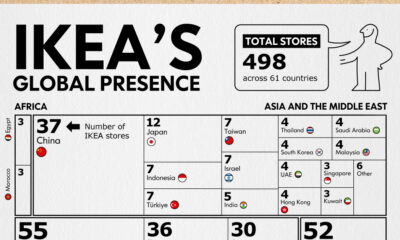
 Business3 months ago
Business3 months agoCharted: Number of IKEA Stores, by Country
Known for their size, labyrinth-like layouts, food, and of course, functional furniture, IKEA stores have become a whole shopping experience. But which country has the most…
-
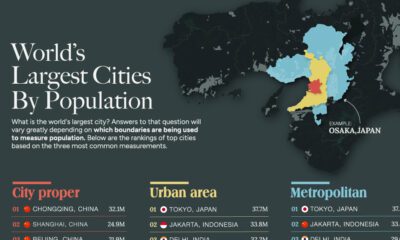
 Maps8 months ago
Maps8 months agoRanked: The World’s Largest Cities By Population
This graphic uses data taken from latest official censuses and projections to rank the largest cities by population.
-
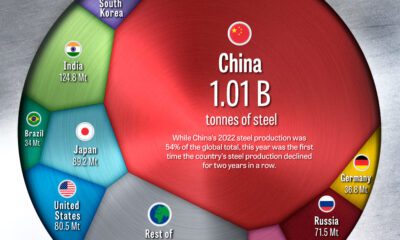
 Mining11 months ago
Mining11 months agoRanked: The World’s Biggest Steel Producers, by Country
China has dominated global steel production the past few decades, but how did the country get here, and is its production growth over?
-
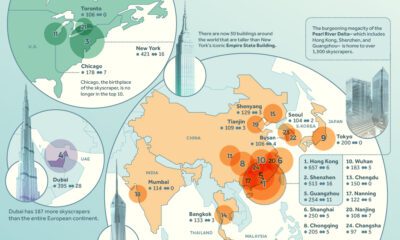
 Misc11 months ago
Misc11 months agoRanked: The Cities with the Most Skyscrapers in 2023
We rank the world’s leading cities with the most skyscrapers, highlighting China’s remarkable dominance in building vertically.
-

 Demographics1 year ago
Demographics1 year agoMapped: The Population of India’s States Compared with Countries
This map juxtaposes nations and Indian states to provide a new perspective on the world’s soon-to-be most populous country


